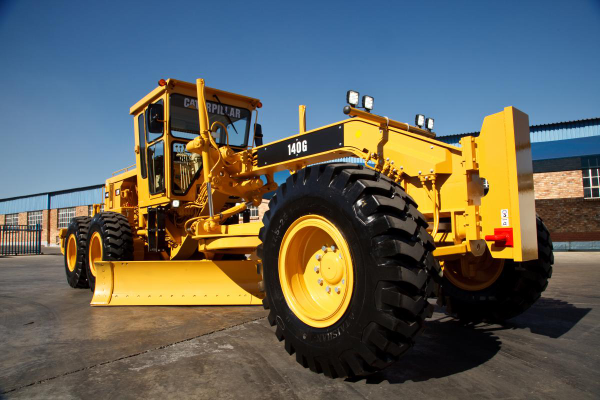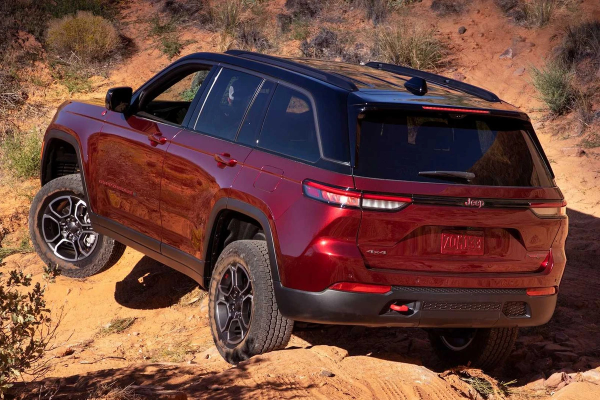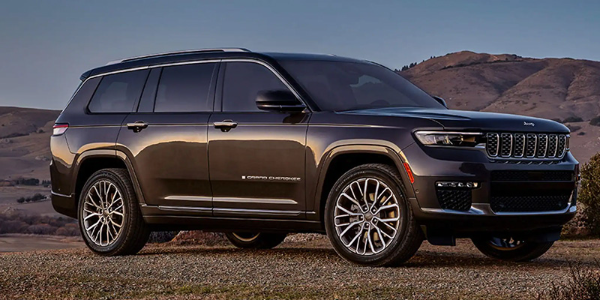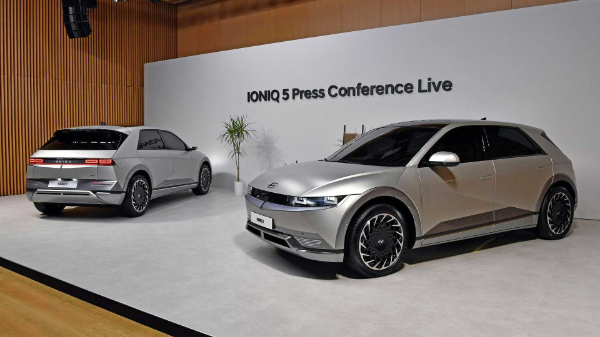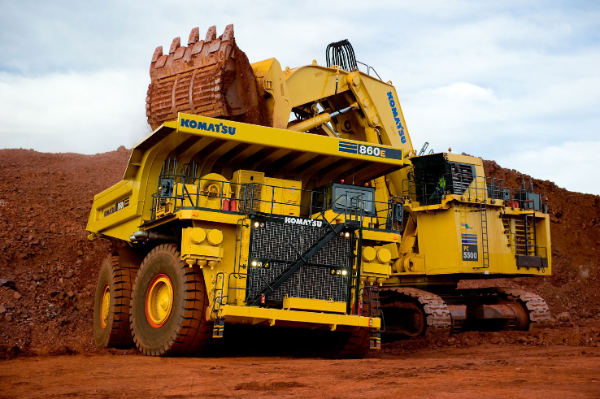Review of the Peugeot 108: When security comes first.
Driving the tiny Peugeot 108 in a normal traffic jam provides convincing evidence for this city slicker's small stature. It simply need a smell of gasoline to continue moving, and due to its size, it is simple to maneuver through traffic. It features airbags all around its occupants, ESC to protect them, and a cool touchscreen on top of that. The fact that it's reasonably priced is also a pleasant surprise. However, there are certain drawbacks...
Consider a scenario where you have a tight budget, need to purchase a new vehicle for your child or better half, and don't want to skimp on safety features. You'll soon learn from some investigation that the Toyota Aygo with the most airbags today costs more. Why include the Toyota Aygo in this? because, until recently, it provided consumers with the most affordable means of obtaining the combination of 6 airbags and stability control.
But that has now changed. There is a challenger from Lyon who arrives well equipped and prepared to fight its twin. That's correct; despite having very different exteriors, the tiniest Toyota and Peugeot are essentially the identical vehicles. The Citroen C1, the three vehicles are the offspring of a joint venture and share a platform, drivetrain, electrical architecture, and interior styling. Their outer skins and the amount of their equipment are the only things that change.
Design
Because of how drastically different they appear, it's surprising to learn that the Peugeot 108 and its Toyota twin share the same base. The 108 has a cheery, upbeat appearance in contrast to the Aygo's cross-eyed appearance, with a touch of LED makeup for good measure. As far as the limitations of a relatively small car's frame would allow, the designers undoubtedly succeeded if they were going for an upscale appearance.
The Aygo's angular rear end has been replaced with Peugeot's characteristic claw-like design, which is applied to the tail lights and rounded curves at the rear. They do share the all-glass tailgate, which is a clever approach to cut expenses and streamline the design. Overall, the 108's style is upscale and contemporary, and it appears to be much more expensive than it actually is.
The Drive
It would be unrealistic to expect executive-car competence from the 108 because it is a little city car. Despite this, the small vehicle boasts a regulated ride quality and safe handling traits. Although it's not designed to be a thrilling driver's car, its modest size makes parking simple and allows for easy exploitation of traffic gaps. The fact that it rides reasonably well (for such a little car) and handles turns reasonably well are merely benefits.
With the exception of the clutch, which lacks feel and has a difficult-to-predict take-up, other controls are simple to use. The electrically assisted power steering turns easily but lacks road feel, and the gearbox shifts with that familiar light but notchy Toyota feel. For its intended purpose, the driving experience is generally satisfactory.
Where the makeup starts to falter a little is on the road. Due to the tiny engine's peaky power delivery, keeping up with traffic requires a lot of movement of the gear lever (unless you're willing to drive in the slow lane). In these circumstances, engine loudness drowns out road rumble, resulting in somewhat frantic movement. However, practically all city cars with small, naturally-aspirated engines have this endemic trait, so it would be unreasonable to punish the 108 excessively for this infraction.
Performance
The modest, naturally-aspirated engine in question has a 1.0-litre displacement, three cylinders, and is supplied by Toyota, just like the 5-speed manual transmission. 53 kW and 93 Nm are the stated power outputs, with the latter peaking at barely 4400 r/min. These outputs appear competitive on paper, but their performance on the ground is weak. With a top speed of 160 km/h, the 0–100 km/h amble should take 13.1 seconds, however our test car didn't support these official numbers.
The way the test car delivered power made issues worse. The modest three-cylinder engine's quivering was made worse by the need to slip the clutch a little bit in order to accelerate from a stop. Because the gear ratios are also relatively far apart (compared to the available torque curve), a lot of loud, high-revving gear-stirring was required to keep the engine running inside its power envelope. The noise level acts as a form of tachometer in place of the instrument cluster's lack of a rev counter, which makes it difficult to determine exactly where in the rev range the engine is operating.
Fuel Consumption
Even when pushed hard enough to maintain reasonable forward speed, the 108 won't penalize its driver at the gas station. Our test average of 5.0 l/100 km in mixed cycle use was still commendable for a car that was driven with no regard for fuel consumption at all and with the air conditioning running at full blast to combat the summer's first real heatwave. The test car didn't come close to its officially-claimed average consumption of 4.3 l/100 km.
Comfort and Space
As was already established, the 108's cabin is similar to those of its Toyota- and Citroen-made brothers. Because of this, the front seats are quite roomy (despite having little shoulder room), while the rear legroom is significantly reduced for anyone taller than 1.8 meters. Only 196 liters of luggage capacity are accessible behind the glass tailgate, which is extremely little. Although the seats are rather comfy and covered in appealing plaid fabric, they are overly low, creating an uncomfortable seating posture for those larger drivers who will need to spread their legs in order to fit behind the wheel.
Nobody anticipates high-end finishes in a cheap vehicle, so the 108's interior's harsh plastic covering is completely appropriate. The layout is simple to learn, but much of the switchgear has a toy-like appearance that doesn't live up to the high expectations set by its elegant design. However, the test car didn't generate any rattles or squeaks because it was very tightly fitted together.
Power steering, air conditioning, a multi-function steering wheel, electric front windows (the rears swivel manually), remote central locking, and a fairly decent color touchscreen infotainment system with cellphone mirroring and Bluetooth- and USB compatibility are all included in the spec sheet. Everything functions without a hitch, which must be a feature for a car at this price.
Safety
Finally, we reach the 108's key selling point: its safety requirements. ABS, six airbags, ISOFIX rear child seat anchors, stability control, and a hill-start assist function make this one of the least costly new car right now.
The 108 also received a 4-star safety rating in the Euro-NCAP crash tests, which is very amazing for a vehicle this size. It's comforting to know that, unlike many other tiny cars with comparable price tags, the safety add-ons are genuinely supported by a solid structure.
The Judgement
Objectively speaking, the Peugeot 108 presents a very compelling case for itself: it is stylish, extremely fuel-efficient, the ideal size for city driving, well-appointed for its class, has an excellent after-sales package, and has an excellent safety record. It's likely that purchasers who appreciate these features won't be concerned about the small boot, uncomfortable back seat, slow performance, or noisy engine. We'll give it a thumbs up just for its emphasis on safety at a reasonable price (and its appealing looks). However, consumers who routinely take lengthy journeys, are in a rush, or transport more than one sizable passenger should certainly think again before signing.
Consider a scenario where you have a tight budget, need to purchase a new vehicle for your child or better half, and don't want to skimp on safety features. You'll soon learn from some investigation that the Toyota Aygo with the most airbags today costs more. Why include the Toyota Aygo in this? because, until recently, it provided consumers with the most affordable means of obtaining the combination of 6 airbags and stability control.
But that has now changed. There is a challenger from Lyon who arrives well equipped and prepared to fight its twin. That's correct; despite having very different exteriors, the tiniest Toyota and Peugeot are essentially the identical vehicles. The Citroen C1, the three vehicles are the offspring of a joint venture and share a platform, drivetrain, electrical architecture, and interior styling. Their outer skins and the amount of their equipment are the only things that change.
Design
Because of how drastically different they appear, it's surprising to learn that the Peugeot 108 and its Toyota twin share the same base. The 108 has a cheery, upbeat appearance in contrast to the Aygo's cross-eyed appearance, with a touch of LED makeup for good measure. As far as the limitations of a relatively small car's frame would allow, the designers undoubtedly succeeded if they were going for an upscale appearance.
The Aygo's angular rear end has been replaced with Peugeot's characteristic claw-like design, which is applied to the tail lights and rounded curves at the rear. They do share the all-glass tailgate, which is a clever approach to cut expenses and streamline the design. Overall, the 108's style is upscale and contemporary, and it appears to be much more expensive than it actually is.
The Drive
It would be unrealistic to expect executive-car competence from the 108 because it is a little city car. Despite this, the small vehicle boasts a regulated ride quality and safe handling traits. Although it's not designed to be a thrilling driver's car, its modest size makes parking simple and allows for easy exploitation of traffic gaps. The fact that it rides reasonably well (for such a little car) and handles turns reasonably well are merely benefits.
With the exception of the clutch, which lacks feel and has a difficult-to-predict take-up, other controls are simple to use. The electrically assisted power steering turns easily but lacks road feel, and the gearbox shifts with that familiar light but notchy Toyota feel. For its intended purpose, the driving experience is generally satisfactory.
Where the makeup starts to falter a little is on the road. Due to the tiny engine's peaky power delivery, keeping up with traffic requires a lot of movement of the gear lever (unless you're willing to drive in the slow lane). In these circumstances, engine loudness drowns out road rumble, resulting in somewhat frantic movement. However, practically all city cars with small, naturally-aspirated engines have this endemic trait, so it would be unreasonable to punish the 108 excessively for this infraction.
Performance
The modest, naturally-aspirated engine in question has a 1.0-litre displacement, three cylinders, and is supplied by Toyota, just like the 5-speed manual transmission. 53 kW and 93 Nm are the stated power outputs, with the latter peaking at barely 4400 r/min. These outputs appear competitive on paper, but their performance on the ground is weak. With a top speed of 160 km/h, the 0–100 km/h amble should take 13.1 seconds, however our test car didn't support these official numbers.
The way the test car delivered power made issues worse. The modest three-cylinder engine's quivering was made worse by the need to slip the clutch a little bit in order to accelerate from a stop. Because the gear ratios are also relatively far apart (compared to the available torque curve), a lot of loud, high-revving gear-stirring was required to keep the engine running inside its power envelope. The noise level acts as a form of tachometer in place of the instrument cluster's lack of a rev counter, which makes it difficult to determine exactly where in the rev range the engine is operating.
Fuel Consumption
Even when pushed hard enough to maintain reasonable forward speed, the 108 won't penalize its driver at the gas station. Our test average of 5.0 l/100 km in mixed cycle use was still commendable for a car that was driven with no regard for fuel consumption at all and with the air conditioning running at full blast to combat the summer's first real heatwave. The test car didn't come close to its officially-claimed average consumption of 4.3 l/100 km.
Comfort and Space
As was already established, the 108's cabin is similar to those of its Toyota- and Citroen-made brothers. Because of this, the front seats are quite roomy (despite having little shoulder room), while the rear legroom is significantly reduced for anyone taller than 1.8 meters. Only 196 liters of luggage capacity are accessible behind the glass tailgate, which is extremely little. Although the seats are rather comfy and covered in appealing plaid fabric, they are overly low, creating an uncomfortable seating posture for those larger drivers who will need to spread their legs in order to fit behind the wheel.
Nobody anticipates high-end finishes in a cheap vehicle, so the 108's interior's harsh plastic covering is completely appropriate. The layout is simple to learn, but much of the switchgear has a toy-like appearance that doesn't live up to the high expectations set by its elegant design. However, the test car didn't generate any rattles or squeaks because it was very tightly fitted together.
Power steering, air conditioning, a multi-function steering wheel, electric front windows (the rears swivel manually), remote central locking, and a fairly decent color touchscreen infotainment system with cellphone mirroring and Bluetooth- and USB compatibility are all included in the spec sheet. Everything functions without a hitch, which must be a feature for a car at this price.
Safety
Finally, we reach the 108's key selling point: its safety requirements. ABS, six airbags, ISOFIX rear child seat anchors, stability control, and a hill-start assist function make this one of the least costly new car right now.
The 108 also received a 4-star safety rating in the Euro-NCAP crash tests, which is very amazing for a vehicle this size. It's comforting to know that, unlike many other tiny cars with comparable price tags, the safety add-ons are genuinely supported by a solid structure.
The Judgement
Objectively speaking, the Peugeot 108 presents a very compelling case for itself: it is stylish, extremely fuel-efficient, the ideal size for city driving, well-appointed for its class, has an excellent after-sales package, and has an excellent safety record. It's likely that purchasers who appreciate these features won't be concerned about the small boot, uncomfortable back seat, slow performance, or noisy engine. We'll give it a thumbs up just for its emphasis on safety at a reasonable price (and its appealing looks). However, consumers who routinely take lengthy journeys, are in a rush, or transport more than one sizable passenger should certainly think again before signing.




